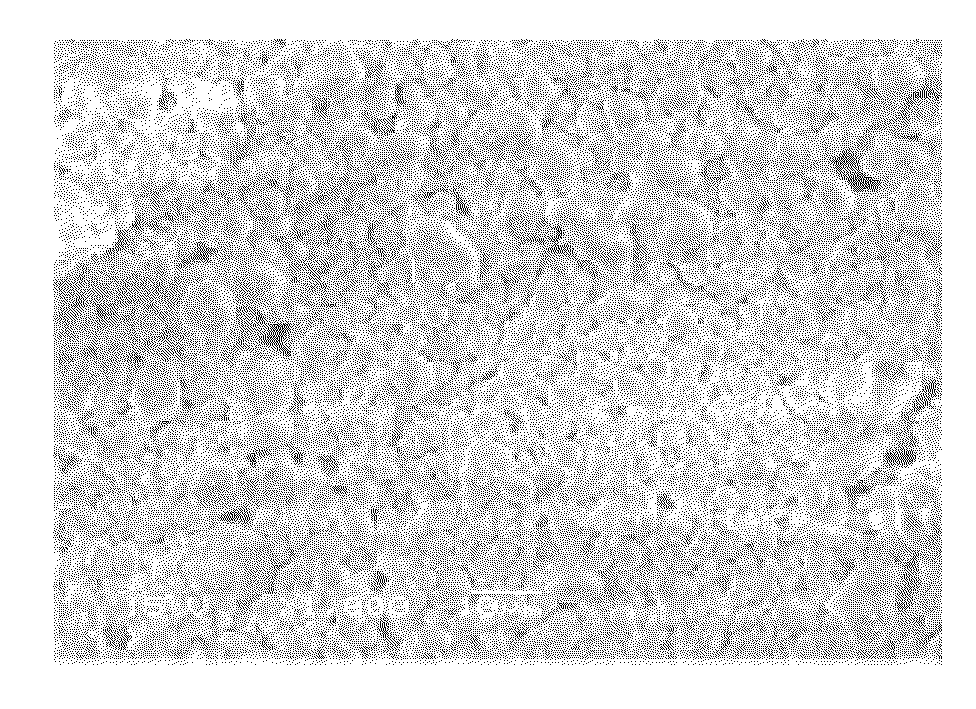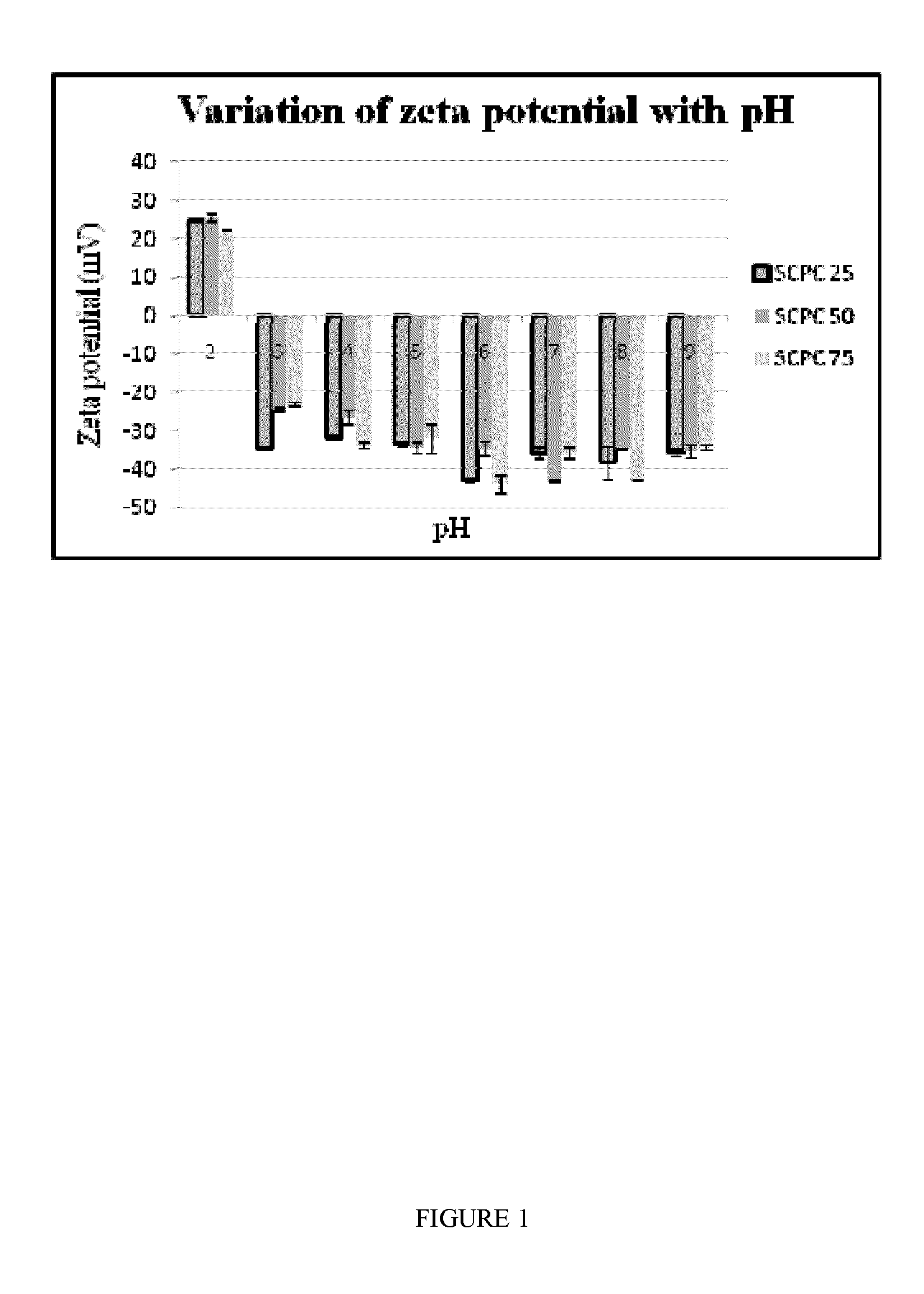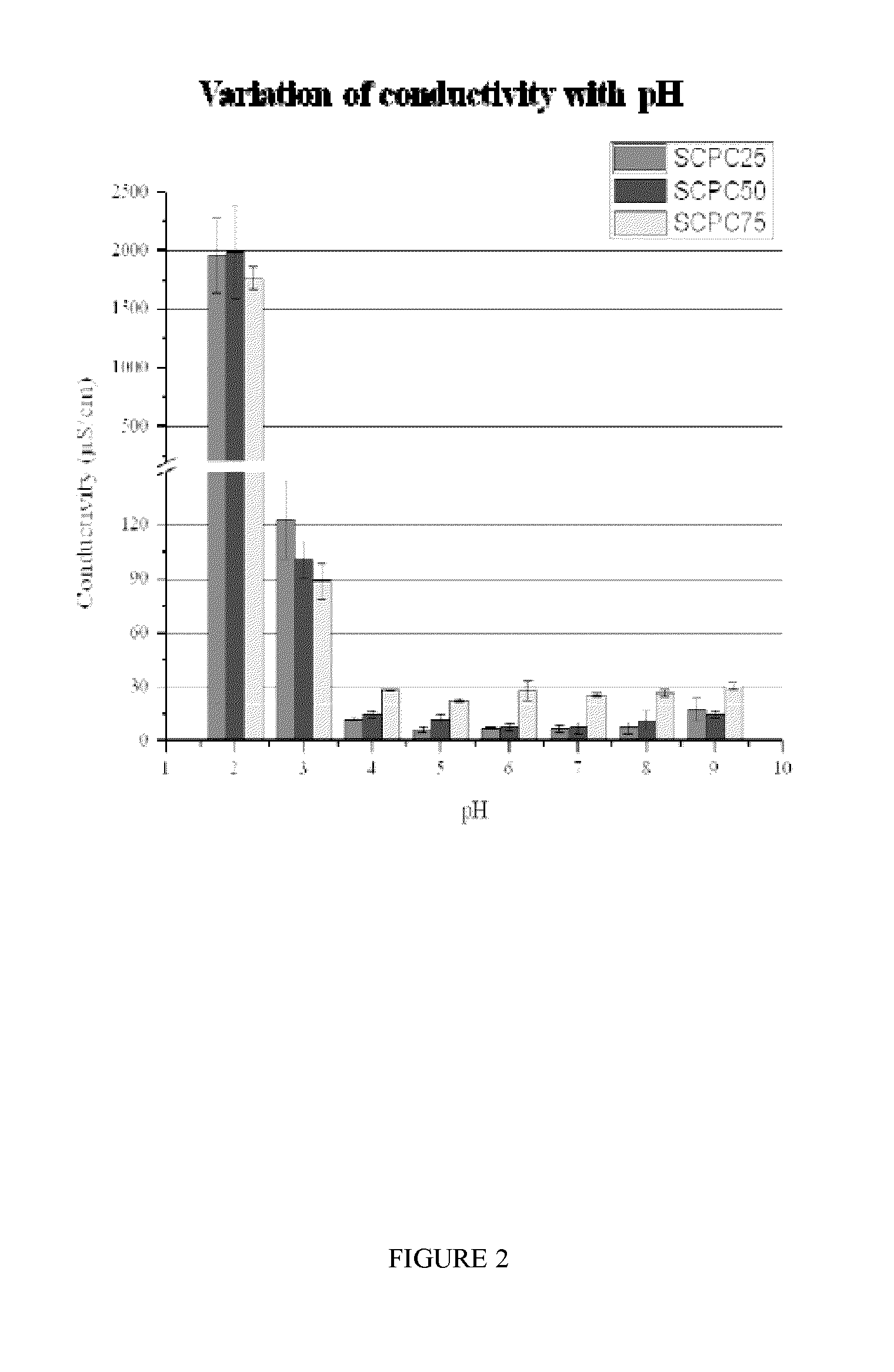Ceramic Coatings and Applications Thereof
a ceramic coating and ceramic technology, applied in the field of ceramic coatings, can solve the problems of limited bone supply increased resorption during healing, and morbidity at the donor site, and achieve the effect of improving chemical and/or mechanical properties
- Summary
- Abstract
- Description
- Claims
- Application Information
AI Technical Summary
Benefits of technology
Problems solved by technology
Method used
Image
Examples
example i
Preparation of Composite Particles Comprising a Silica Component and Calcium Phosphate Component
[0061]Composite particles comprising various weight percents of silica and calcium phosphate as set forth in Table II were prepared according to the following procedure. Appropriate ratios of dicalcium phosphate CaHPO4.2H2O and silica were placed in a polyethylene bottle and mixed on a roller mixer for 24 h. The resulting mixture was moistened with 0.1 M NaOH and placed in a teflon mold of 10 mm diameter×10 mm height. The mixture was dried at room temperature and subsequently sintered in air at 850° C. for 2 hours. The sintered silica-calcium phosphate mixture was ground in a roller jar mill and separated mechanically on stainless steel sieves to provide composite particles having a silica component and a calcium phosphate component. Composite particles less than 600 μm were further ground in a PM 100 planetary ball mill from Retsch Technology of Newtown, Pa. for a period of 24-34 hours t...
example ii
Dispersion pH, Zeta Potential and Conductivity
[0062]The affect of pH on the zeta potential of composite particles described herein was determined by providing dispersions of composite particles SCPC25, SCPC50 and SCPC75 in a 50% ethanol / water continuous phase of varying pH according to Table III. The pH of the dispersions was varied using NH4OH or HNO3. A sample of each dispersion [3.0 ml of 0.1% (w / v) SCPC dispersion] was analyzed for zeta potential and conductivity using a solvent resistant electrode connected to a ZetaPALS of Brookhaven Instruments Corp. of Holtsville, N.Y. The zeta potential was determined by measuring the electrophoretic mobility (μ) of the SCPC particles. The Smoluchowski equation was used to calculate SCPC's zeta potential (ζ).
μ=εζ / η
[0063]where: μ is the electrophoretic mobility, ε is the electric permittivity of the medium and η is the viscosity. To calculate conductivity from conductance values, the conductance of standard 1 mM KCl of known conductivity (13...
example iii
Dispersion Continuous Phase, Zeta Potential and Conductivity
[0067]The affect of the chemical identity of the continuous phase on the zeta potential of composite particles described herein was determined by providing dispersions of composite particles SCPC25, SCPC50 and SCPC75 in various continuous phases according to Table IV.
TABLE IVDispersion CompositionDispersedPhaseContinuous PhaseSCPC25100% EthanolSCPC2550% Ethanol / Water (pH 7)SCPC25100% DI WaterSCPC50100% EthanolSCPC5050% Ethanol / Water (pH 7)SCPC50100% DI WaterSCPC75100% EthanolSCPC7550% Ethanol / Water (pH 7)SCPC75100% DI Water
[0068]The zeta potential of the composite particles of each dispersion of Table IV was measured in accordance with the procedure set forth in Example II above. FIG. 3 illustrates the variation in zeta potential of SCPC25, SCPC50 and SCPC75 with variation in the chemical identity of the continuous phase. Each of the composite particle compositions acquired a higher zeta potential in pure ethanol than in co...
PUM
| Property | Measurement | Unit |
|---|---|---|
| size | aaaaa | aaaaa |
| thickness | aaaaa | aaaaa |
| weight percent | aaaaa | aaaaa |
Abstract
Description
Claims
Application Information
 Login to View More
Login to View More - R&D
- Intellectual Property
- Life Sciences
- Materials
- Tech Scout
- Unparalleled Data Quality
- Higher Quality Content
- 60% Fewer Hallucinations
Browse by: Latest US Patents, China's latest patents, Technical Efficacy Thesaurus, Application Domain, Technology Topic, Popular Technical Reports.
© 2025 PatSnap. All rights reserved.Legal|Privacy policy|Modern Slavery Act Transparency Statement|Sitemap|About US| Contact US: help@patsnap.com



